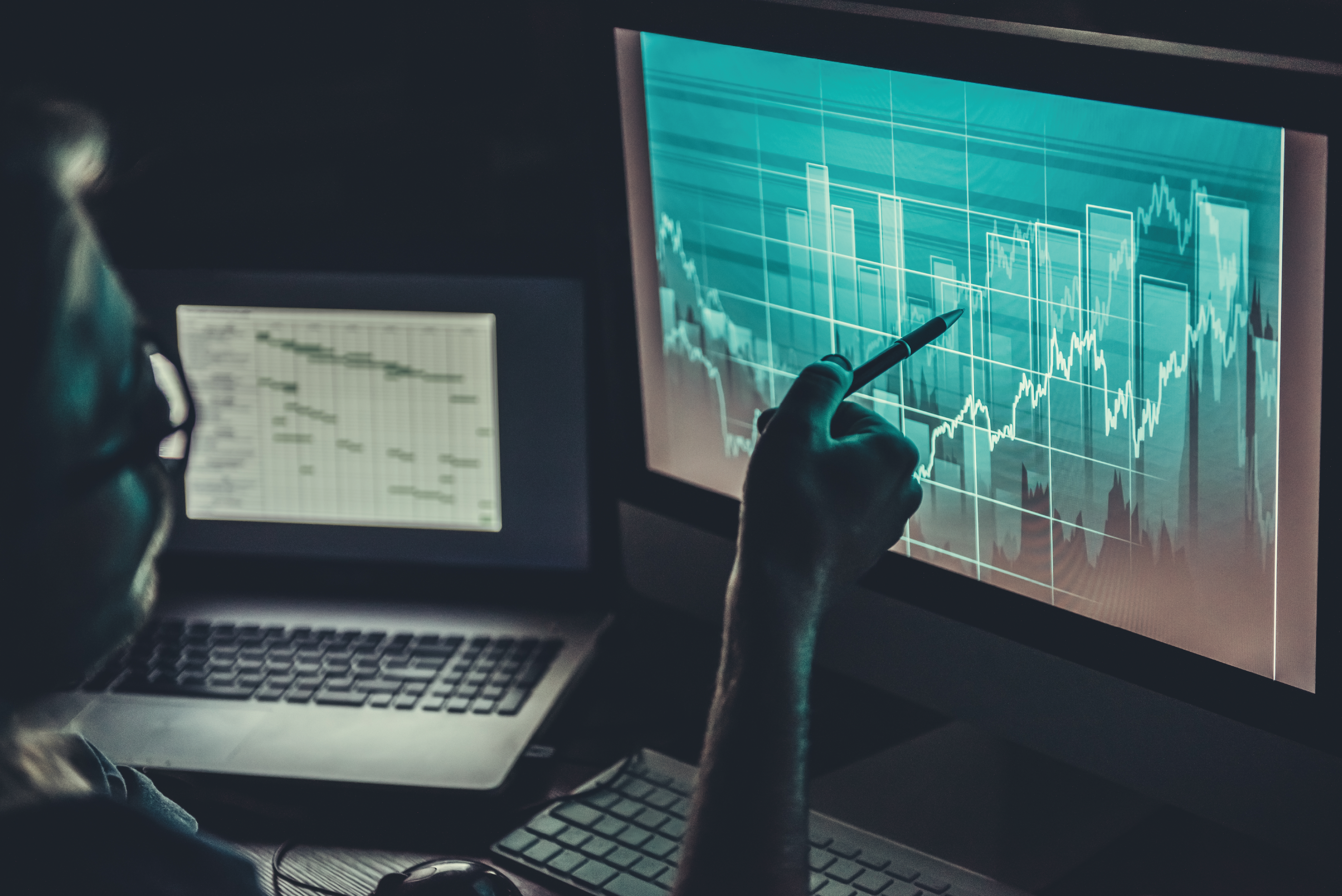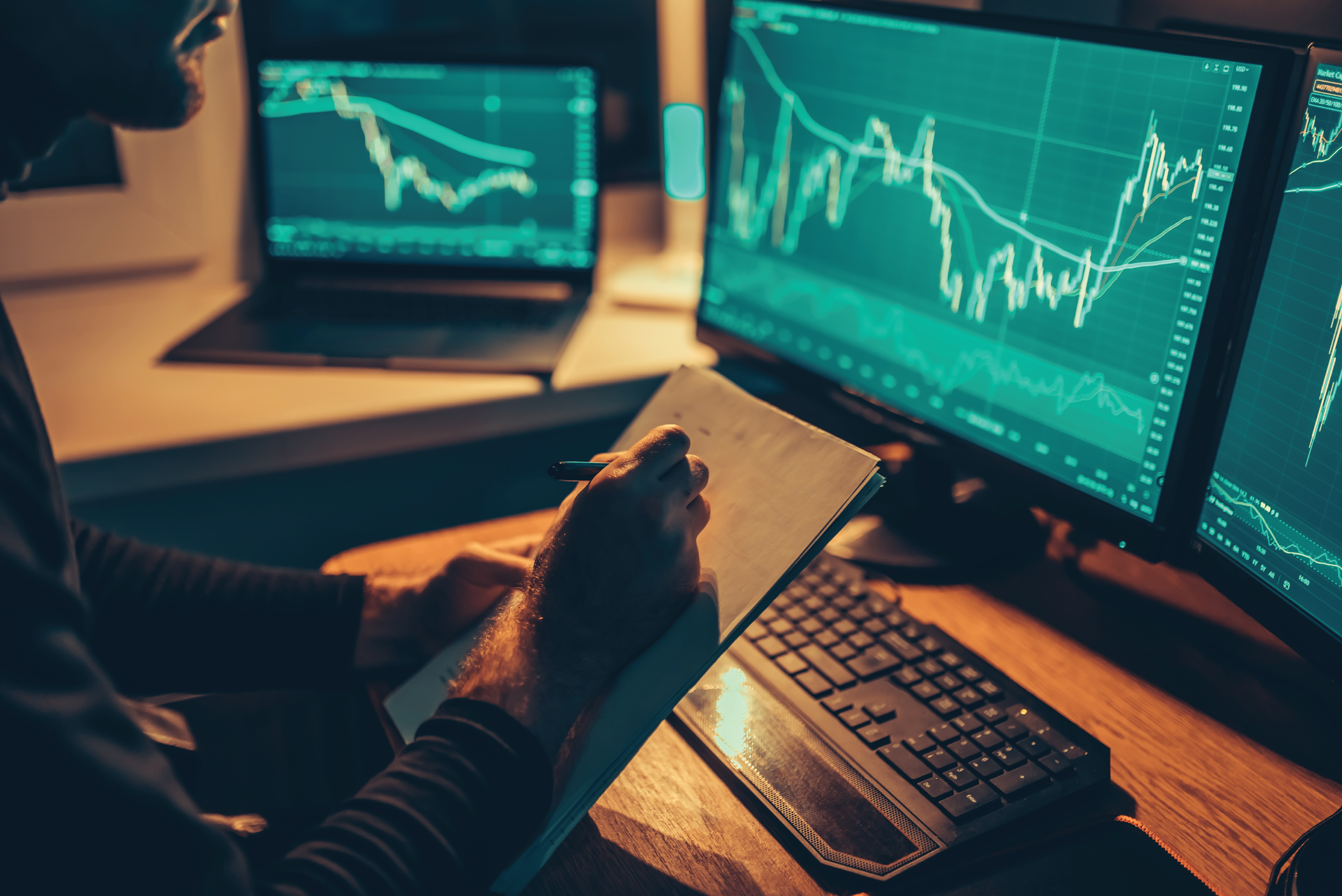Three years after ChatGPT’s debut in November of 2022, opinions about the ultimate economic impact of AI are mixed. The most rapidly adopted technology in history has more than changed how we interact with computers and mobile devices. It has altered how investors and businesses allocate capital and natural resources. We’re witnessing a global technology arms race that has many questioning whether we’re experiencing useful innovation or the emergence of the next financial bubble.
While companies like OpenAI and Anthropic capture headlines, hyper-scalers Microsoft, Amazon, Google, and Meta may be a better gauge of AI’s investment trajectory. These companies provide the essential computing infrastructure that makes AI possible. Collectively, they have a capital expenditure budget of $112 billion in Q4 of 2025 alone, the vast majority of which is devoted to datacenter investments.1,4
This massive level of investment capital ripples through the entire technology sector, from Nvidia’s GPU to Oracle’s servers, to specialized cooling systems and power infrastructure from GE, and (possibly) to your front door in the form of higher utility prices.
The hyper-scalers are the foundation of AI market dynamics analysis. Since ChatGPT’s launch, these four stocks have delivered extraordinary returns, up 180% on an equal weighted basis, dwarfing the broader market’s 33% gain (also on an equal weighted basis through October).2 The hyper-scalers are creating the backbone for AI through significant infrastructure investment that positions them to capture value regardless of which AI applications ultimately succeed. If AI really is moving towards a bubble, the hyper-scalers would be at the center of it.
What is a Bubble?
People throw around the term as if there is a generally accepted definition. There is not. There are precise technical definitions, such as “two standard deviations from the long-term price trend”. There are generic definitions, such as “when the value of an asset rises faster than its intrinsic value”. The term is also used in a pejorative sense to reflect the “shoulda bought” stock that got away and is now up significantly.
Taking a different approach, it seems both mainstream and social media pundits have mastered a clever rhetorical sleight of hand with the word “bubble.” They deploy it simultaneously as both prediction and diagnosis, creating an unfalsifiable narrative that serves their interests regardless of market outcomes.
To understand this trick, we need to revisit market fundamentals. Stock prices fluctuate constantly. This isn’t a bug; it’s a feature. On any given day, a stock might be cheap, fairly valued or expensive relative to historical metrics and future expectations. Growth stocks particularly command premium valuations because investors pay up this future potential. When that potential materializes, early investors profit. When it doesn’t, prices fall. When progress comes in fits and starts, which is typical, volatility follows.
This is where the bubble rhetoric becomes problematic. Yes, AI stocks have become expensive as investors chase the next transformative technology. Yes, these stocks will experience corrections, consolidations, and renewed rallies. This pattern is playing out currently, as it always does with emerging technologies.
Here’s the trick; pundits observe expensive valuations, predict the inevitable pullback, then immediately declare we’re in a bubble. This isn’t Nostradamus-level prognostication; it’s tautology. They’re essentially saying, “stocks that go up will someday go down, therefore bubble.” By this logic, every growth cycle in market history was a bubble. Conflating normal market cycles with true bubbles isn’t analysis; it’s clickbait masquerading as wisdom.
For our purposes, a framework for assessing the AI business cycle is more important. No one can tell you the intrinsic value of AI investments more than a few months into the future. Stock price trends on three-year-old technology serve little purpose. AI is developing too quickly to be able to forecast the future profitability of AI-related investments to the penny. A better framework is to assess the financial foundations of leading firms to determine how much further AI investments can go.
A good framework for this is Hyman Minsky’s “Financial Instability Hypothesis”. His work in banking led him to appreciate that the flow of capital is a better way of assessing business cycle risks than financial ratios or price trends. His theory has three stages:
Hedge Finance: The stable phase in which business operations easily cover any debts the business may have. An example of this would be a small credit card balance you pay off every month from salary with plenty of extra savings left at the end of the month.
Speculative Finance: As the name suggests, this phase is less stable. Businesses take on extra debt to fund investments that should be productive in the future based on expectations. At this point, businesses cannot pay off their debt; they can only pay the interest on their debt.
Ponzi Finance: This phase involves such optimistic expectations about future business conditions that firms are willing to take out new, larger debts to pay off existing debt to fund even greater expectations of future demand. This is the most fragile phase and one that rarely happens on a large scale outside of major bubbles such as the financial crisis and tech boom of the late 90s.
The Hyper-Scalers
Microsoft, Amazon, Google, and Meta are all clearly in Minsky’s hedge finance phase. They operate very strong businesses, by nearly every financial metric. All four have negative net debt, meaning they have more cash on their books than outstanding debt. This metric is just a starting point for analysis but does plot them miles from anything resembling speculative finance.
It seems far-fetched, but these firms are so profitable they can easily afford to spend ~$400 billion a year on a new unproven and rapidly changing technology and remain financially stable.3 Even Meta, the weakest of the group, will add $20 billion to their cash pile over the next 12 months, according to analysts, despite spending a projected $108 billion on datacenters (based on earnings call transcripts on 10/29/25).4 Cynics argue that AI is just an expensive version of spellcheck, which may prove to be true. However, it’s an investment the big four firms can afford to make, even if the cynics are right.
From a financial stability standpoint, the lack of debt on the balance sheets of the key players in the AI space suggests that if AI is a poor investment in the long term, it is unlikely to create the types of spillover effects to the larger economy that we experienced in previous bubbles. It’s bad debt in key parts of the financial system that makes investment bubbles lasting issues on Main Street. We just don’t have that systemic risk in the market today. That may change in the future, but as of today the largest names in the S&P 500 are not making speculative investments in AI that they can’t afford.
OpenAI
The hyper-scalers are important from an investor perspective, representing about 15% of the S&P 5005. But OpenAI, the private company that has become the poster child for AI, is commanding investors’ attention and causing concern. Earlier this month, Bloomberg reported that OpenAI has struck deals with a series of tech companies that could top one trillion dollars to build out AI-related infrastructure over the coming years. These agreements raised investors’ eyebrows because there’s the small fact that OpenAI lost $12 billion last quarter and isn’t expected to be profitable until the end of the decade.7
OpenAI is expected to lose money; that’s what private investors signed up for, and there is no shortage of people willing to make that investment. The expectation is their investments will be used to build tools and products that generate huge amounts of revenue in the future, thereby rewarding investors willing to take the risk today. Until recently, the risk of an investment in Open AI failing has been concentrated in private equity markets, primarily with large institutional investors (and Microsoft). However, the amount of capital needed to build the infrastructure that OpenAI requires for the future is becoming too large for the private equity space to fund, so they have turned to the debt markets.
This change from equity-funded to debt-funded investments is a signpost for Minsky’s model, moving from hedge financing to speculative. Most of what has been announced still falls under the umbrella of private markets, so the exact financials are not publicly available, but the numbers have set records for the largest private debt deals ever ($27 billion by Blue Owl).6 Analysts expect the trend of debt-financed AI infrastructure to accelerate. The shift to debt financing for some firms in the AI space may cause market volatility as investors adjust their models to include this additional risk.
Discerning Investors
Divergent market reactions to recent AI announcements from Meta and Amazon are a healthy sign. Meta’s stock fell 17% after announcing a large AI investment8 alongside a $30 billion bond offering9. Amazon stock popped 14% after coupling its AI plans with strong profits.10 This shows investors are not just blindly chasing AI themes. They are actively discerning risk, weighing the high cost of an uncertain technology against each company’s specific financial health. This responsiveness to new, nuanced information is precisely how a healthy market is supposed to function. These contrasting reactions show the market is working as it should, differentiating between companies based on their financial position and ability to handle major AI investments.
Conclusions
When huge sums are involved in complex new technologies, it is natural for casual investors to be skeptical. This skepticism may be intensified by the hype surrounding AI, which ranges from promises of replacing human labor to warnings of science-fiction style consequences. In this situation, arguments for an AI investment bubble can be highly persuasive and appear intelligent, even if fundamentally flawed.
The bottom line is that no investor knows what AI will look like in the future, who will be the “winners,” or how profitable they will be. We do know that AI and related infrastructure are important contributors to economic growth and major drivers of equity market performance.
Market corrections, often labeled bursting bubbles, are common byproducts of a dynamic economy. Most fade without the average investor noticing. Recent examples include meme stocks, biotech, fracking, green energy, vegan meat, electric vehicles, 3D printing, work from home companies, and SPACs (Special Purpose Acquisition Companies). These investment themes came and went without lasting economic damage, though they felt consequential to participants and headline watchers at the time.
Should we arrive at a point when everyone agrees with a high degree of confidence that the future of AI is set and will be hugely profitable with no investment risk, then it will be time to worry.
Recommendation
The key to wealth building is saving within an investment risk management strategy that appropriately balances your expectations for investment return with your capacity to withstand market downturns without too much anxiety. At Pure, we generally think of this as your risk profile, reflected in your portfolio allocation strategy.
This commentary focuses on AI, given the high-profile nature of this emerging technology. While there has been market volatility within the sector recently, we view this as normal market behavior so far. A better test of your risk tolerance came earlier this year when the S&P 500 dropped nearly 19% from February 19th to April 8th, approaching official correction territory.11 If you stayed on the course through that period, you’ll likely weather this tech storm just fine.
As always, we encourage you to reach out to your Pure Financial advisor if you wish to further discuss this communication, your overall risk profile, or with any other topics of interest.
Sources:
-
Bloomberg Model, Hyperscalers Q4 25 Cap Ex, Accessed in November 2025.
-
Comparative Returns, Hyperscalers Index and S&P 500 Equal Weighted Index, 11/30/2022-10/31/2025, Accessed in November 2025.
-
Bloomberg, OpenAI, Nvidia Fuel $1 Trillion AI Market With Circular Deals (2), October 2025.
-
META, Third Quarter 2025 Results Conference Call, October 29, 2025.
-
Bloomberg, Bloomberg 500 Index, Accessed in November 2025.
-
Dow Jones, Meta, Blue Owl and AI: Here are the details of Wall Street’s biggest private-credit deal ever, Morningstar, October 2025.
-
Reuters, OpenAI does not expect to be cash-flow positive until 2029, Bloomberg News reports, March 2025.
-
Los Angeles Times, Meta tumbles as investors compare its AI spending splurge to metaverse missteps, November 2025.
-
Reuters, Meta to raise $30 billion in its biggest bond sales as AI expansion costs rack up, October 2025.
-
Reuters, Amazon shares soar as cloud growth beats expectations, October 2025.
-
S&P 500 Index, 2/19/2022-4/8/2025, Accessed in November 2025.
If you’re not a Pure client, explore your overall financial situation with our free Financial Blueprint.












